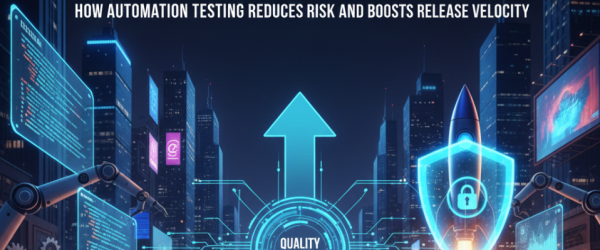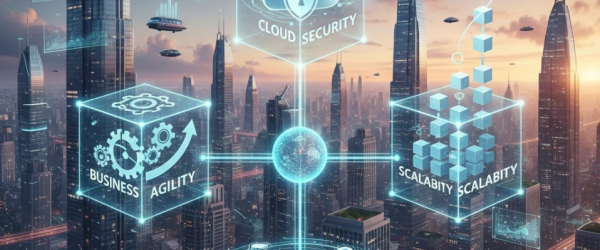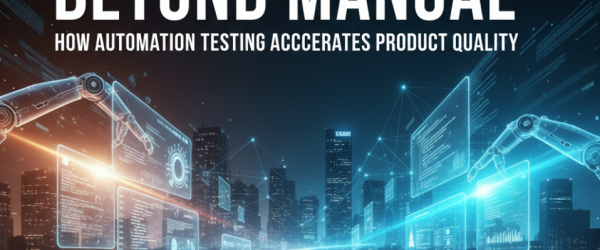Introduction
The digital heartbeat of any modern enterprise is its IT infrastructure. For decades, the goal of IT operations (ITOps) has been stability and reliability. Yet, in a world where speed is currency and customer experience is paramount, mere stability is no longer enough. The mandate has shifted from reactive maintenance to predictive intelligence.
This seismic change is driven by the strategic deployment of Artificial Intelligence (AI), specifically in the form of AIOps (Artificial Intelligence for IT Operations). AI is transforming IT from a support function that reacts to failures into a proactive engine that anticipates, optimizes, and drives better business outcomes. The result is a simple equation: Smart IT leads to Smarter Business.
The Cost of the Reactive Status Quo
Traditional ITOps workflows are fundamentally reactive. They rely on human teams to manually triage alerts, often suffering from “alert fatigue” when faced with the sheer volume of data generated by multi-cloud, hybrid environments.
This reactive model comes with substantial hidden costs:
- Financial Impact of Downtime: Major IT outages continue to be costly. A single hour of downtime for a revenue-generating production service can cost an average of $250,000 or more, underscoring the necessity of prevention.
- Slow Decision-Making: Without centralized, intelligent analysis, businesses rely on fragmented data. Research shows that professionals using AI tools can complete tasks 25.1% more quickly and make decisions at a faster pace (70%) than those relying on traditional methods.
- Wasted Cloud Spend: The lack of intelligent optimization often leads to over-provisioning resources “just in case.” Organizations report that approximately 32% of their cloud spend was wasted in 2022.
The AI Transformation: From Fixing to Forecasting
AI empowers IT teams to move beyond simple automation (doing repetitive tasks faster) to true predictive and proactive operations (anticipating needs and acting autonomously). This transformation is built on three core pillars:
1. Predictive Analytics for IT Resilience
The cornerstone of Smart IT is the ability to foresee events. AI models analyze massive volumes of real-time and historical data—logs, metrics, and traces—to spot subtle anomalies that precede a major incident.
- Prediction Use Cases: AI excels at prediction (32% of primary AI-empowered use cases) [^3], forecasting resource saturation, predicting hardware failure based on performance degradation, and even anticipating security vulnerabilities based on traffic patterns.
- Resulting Efficiency: This proactive stance means issues are often addressed before they impact service quality. Organizations with AI-led processes achieve 2.4x greater productivity than their peers.
2. Prescriptive Intelligence and Self-Optimization
Proactive operations go beyond predicting a problem; they prescribe the solution. AIOps platforms not only tell you what will go wrong, but why and how to fix it—often automatically.
- Root Cause Analysis (RCA): AI dramatically accelerates the RCA process by correlating thousands of events from different systems into a single, cohesive narrative. This turns hours of manual investigation into minutes of focused action.
- Cost Optimization: AI-driven tools are used to ensure application performance at the lowest possible cost. They continuously and automatically adjust cloud resources based on real-time demand, minimizing the wasted spend seen in traditional manual provisioning. Providence, for example, achieved over $2 million in savings through optimization actions while assuring application performance.
3. Smarter Business Outcomes at the Edge
The intelligence generated by AIOps doesn’t stay confined to the IT department. By creating a reliable, high-performing, and cost-optimized infrastructure, AI directly benefits core business metrics:
- Customer Experience: Seamless, always-on services lead to higher customer satisfaction. Personalized AI-driven marketing can achieve revenue increases of up to 10% [^6].
- Speed to Market: Agile, self-optimizing infrastructure supports rapid development and deployment. Companies with fully modernized, AI-led processes achieve 2.5x higher revenue growth and 3.3x greater success at scaling Gen AI use cases.
Empowered Workforce: By automating routine and repetitive tasks, AI frees up high-value IT talent. Executives agree that digital labor enables better insights and empowers decision-makers to focus on higher-value analysis and innovation.
The Path to Smart IT
Adopting a Smart IT approach powered by AI is a strategic journey, not a quick fix. It requires:
- Data Foundation: Implementing robust observability tools to collect and fuse clean, reliable data (metrics, logs, traces) from all sources.
- Strategic Investment: Focused investment in AIOps platforms that move beyond basic automation to deliver true predictive and prescriptive capabilities.
- Talent Reinvention: Upskilling IT teams to work with and govern AI systems, focusing their efforts on strategy, architecture, and innovation.
Conclusion
The evolution from reactive to proactive and predictive operations is the difference between surviving and thriving in the digital age. By strategically leveraging AI to create Smart IT infrastructure, businesses gain unprecedented levels of resilience, efficiency, and intelligence.
This is more than an operational change; it is a competitive advantage. The ability to make decisions 70% faster and achieve significantly higher productivity is the foundation of a Smarter Business, positioning organizations for sustainable success in a rapidly changing market.







